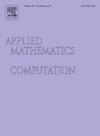减少汉密尔顿步行量
IF 3.4
2区 数学
Q1 MATHEMATICS, APPLIED
引用次数: 0
摘要
有限图中的Hamilton遍历是一种遍历每个顶点至少一次的遍历,无论是开放的还是封闭的。在这里,我们介绍了Hamilton步行,它在某种意义上被简化了,因为它避免了立即的回溯:一个简化的Hamilton步行从不连续地前后穿过同一条边。虽然每个连通图都存在Hamilton漫步,但不能保证所有图都存在简化的Hamilton漫步。然而,我们证明了在最小价至少为2的连通图中确实存在简化的Hamilton行走。此外,给定这样一个n个顶点的图,我们提出了一个O(n2)时间算法,该算法构造了长度最多为n(n+3)/2的简化汉密尔顿行走。具体来说,对于属于正则展开图族的图,我们可以找到长度不超过c(6n−2)logn+2n的简化Hamilton walk,其中c是与n无关的常数。本文章由计算机程序翻译,如有差异,请以英文原文为准。
On reduced Hamilton walks
A Hamilton walk in a finite graph is a walk, either open or closed, that traverses every vertex at least once. Here, we introduce Hamilton walks that are reduced in the sense that they avoid immediate backtracking: a reduced Hamilton walk never traverses the same edge forth and back consecutively.
While every connected graph admits a Hamilton walk, existence of a reduced Hamilton walk is not guaranteed for all graphs. However, we prove that a reduced Hamilton walk does exist in a connected graph with minimal valency at least 2.
Furthermore, given such a graph on vertices, we present an -time algorithm that constructs a reduced Hamilton walk of length at most . Specifically, for a graph belonging to a family of regular expander graphs, we can find a reduced Hamilton walk of length at most , where is a constant independent of .
求助全文
通过发布文献求助,成功后即可免费获取论文全文。
去求助
来源期刊
CiteScore
7.90
自引率
10.00%
发文量
755
审稿时长
36 days
期刊介绍:
Applied Mathematics and Computation addresses work at the interface between applied mathematics, numerical computation, and applications of systems – oriented ideas to the physical, biological, social, and behavioral sciences, and emphasizes papers of a computational nature focusing on new algorithms, their analysis and numerical results.
In addition to presenting research papers, Applied Mathematics and Computation publishes review articles and single–topics issues.

 求助内容:
求助内容: 应助结果提醒方式:
应助结果提醒方式:


